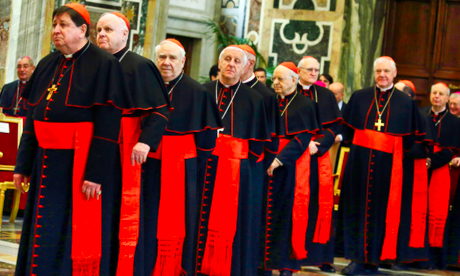Pope Francis’ plan for the reform of the Roman Curia will change the names of several offices and merge a few of them, but the biggest change it hopes to spark is one of attitude.
The last major reorganization of the Curia came with St. John Paul II’s apostolic constitution, “Pastor Bonus” (The Good Shepherd) in 1988, which — in its very first sentence — spoke of Jesus entrusting the apostles with “the mission of making disciples in all nations and of preaching the Gospel to every creature.”
To facilitate that mission in the modern world, St. John Paul had said, the church needs a structure to promote “communion,” which “glues the whole church together.”
Pope Francis’ successor document to “Pastor Bonus” is tentatively called “Praedicate Evangelium” (Preach the Gospel), and drafts of it were sent to bishops and a variety of experts for comment in the spring.
Of course, promoting the communion of the church and preaching the Gospel are essential tasks for the popes. For Catholics they are inextricably bound together, and one makes little sense without the other.
But when one is emphasized more than the other, priorities change.
The energy of the Curia can be directed to promoting unity, offering direction and gathering suggestions and ideas, a somewhat inward gaze that could increase the perceived authority of curial officials.
The risk is a tendency toward uniformity and thinking that the closer one is to the center, the more authority he has.
On the other hand, the Curia’s efforts can focus on encouraging outreach and new initiatives for evangelization, an outward gaze that could decrease the perceived authority of curial officials.
The risk here is possible fragmentation and a sense that every diocese, movement and group is free to do its own thing.
Finding the right balance has been a goal of Pope Francis and his international Council of Cardinals.
At the pre-conclave meetings before the election of Pope Francis in 2013, cardinals said one thing they wanted under a new pope was a reform of the Roman Curia to promote efficiency and a greater sense of service to bishops around the world.
Bishops from every continent who have made their “ad limina” visits to the Vatican over the past six years have said that already is occurring.
Previously, many have said, they would visit a Vatican office and be told what they needed to do; sometimes it even approached a scolding.
Now, they say, the predominant attitude is: “How can we help you?”
The structural reorganization of the Roman Curia has taken much more time than many people expected.
Six years ago the pope and members of the Council of Cardinals began studying each Vatican office, its responsibilities, special projects and staffing. Only then did they begin discussing ways to reform the Curia. Continue reading
- Image: The Dialogue
